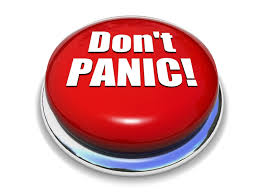
It’s not yet hysteria, but there’s definitely an edge creeping into the national discussion surrounding interest rates. The latest to lean against the RBA is “business”, or so described by locked-BS, via a number of lobby groups:
…Housing Industry Association senior economist Shane Garrett says it is extremely important that low interest rates are maintained, faced with an economy that is growing below trend and with the unemployment rate at a decade high of six per cent.
…Retailers said while there were signs of a spending revival, the small business sector was still struggling.
“We are still seeing sectors of retail doing it very tough,” Australian Retailers Association executive director Russell Zimmerman said.
He urged the central bank to exercise the same caution in raising rates in the future as it did lowering them.
Meanwhile, manufacturing continues to struggle, highlighting that large parts of the economy are failing to gain traction, according to Australian Industry Group chief executive Innes Willox.
…”Subdued local demand and the newly resurgent dollar are weighing heavily against the efforts of manufacturers to rebuild their sales base in Australia and internationally,” Mr Willox said.
You can expect this tension to increase not decrease. Despite the RBA pledging low rates forever, Q1 inflation is going to come in at or above its target band and Q2 is likely to be even worse. The bullhawks are going to screech louder as the year rolls on, encouraged by a short term firming in the labour market.
As I argued yesterday, the RBA is unlikely to actually move given the capex cliff but the brinkmanship will get worse before it gets better. Alan Mitchell captures why today quite nicely at the AFR:
…Interest-rate sensitive demand will expand to fill the gap left by mining investment, but not in lock step. The housing market already is red hot, while non-mining business investment is only starting to thaw.
…Hopefully, as higher property values and share prices translate into a sustained increase in wealth-driven consumer spending, business investment will pick up, perhaps with a rush.
The long period of very low rates of investment in manufacturing and the service sector means the capital stock has aged, potentially leaving individual businesses vulnerable if their competitors steal a march by installing new capital and new technology.
Mitchell is close to the RBA so this probably captures their plan. Why they’ve opted for “hopefully” and “perhaps” versus solid and measurable gains is competitiveness is anybody’s guess. Their own research told them that in a post-mining boom adjustment:
…an increase in Australia’s competitiveness would help facilitate the macroeconomic adjustments necessary during the transition from the investment to production phase by providing support to sectors outside of the resources sector, thereby helping to rebalance growth in the economy. Reflecting the unparalleled magnitude of the expansion, the transition necessary is considerable and is likely to pose challenges to both firms and policymakers. The current policy frameworks and institutional structures, which were important in facilitating better macroeconomic outcomes during the upswing than occurred historically, may also assist this transition.
Then again, maybe not. Those measuring said competitiveness are deeply unimpressed with Australia’s progress. The World Trade Organisation has released its biannual Global Enabling Trade Report in which Australia has tumbled from 17th to 23rd and down from a high of 14th in 2009. It is summarised below by the AIG:
Major barriers for exporting from Australia are:
- Identifying potential markets and buyers (17.4%)
- High costs or delays caused by international transportation (13.3%)
- Access to imported inputs at competitive prices (11.2%)
Major barriers for importing into Australia include:
- Burdensome import procedures (24.6%)
- High costs or delays caused by international transportation (19.7%)
- Tariffs (16.5%)
Among the four key areas that help assess each country’s capability in terms of global trade facilitation, Australia has slipped to:
- 74th on “Market access” from 44th in 2008. This measures the extent and complexity of a country’s tariff regime, as well as tariff barriers faced and preferences enjoyed by a country’s exporters in foreign markets.
- 22nd on “Border administration” from 11th in 2008. This area assesses the quality, transparency and efficiency of border administration of a country.
- 20th on “Infrastructure” from a peak of 14th in 2009. This component evaluates the availability and quality of transport infrastructure of a country, associated services, and communication infrastructure, necessary to facilitate the movement of goods within the country and across the border.
- 19th on “Operating environment” from a peak of 14th in 2009. This measures the quality of key institutional factors impacting the business of importers and exporters.
In short, infrastructure and institutional congestion are steadily choking commerce. Throw in the RBA’s high dollar and non-resource tradables are dying.
Not all of this can be blamed on the central bank but they are a part of authorities’ general failure to address structure, opting instead for the mighty can kick of the population ponzi, pumped land prices and choked competitiveness model that is, in reality, taking us on an increasingly pot-holed road to nowhere.

